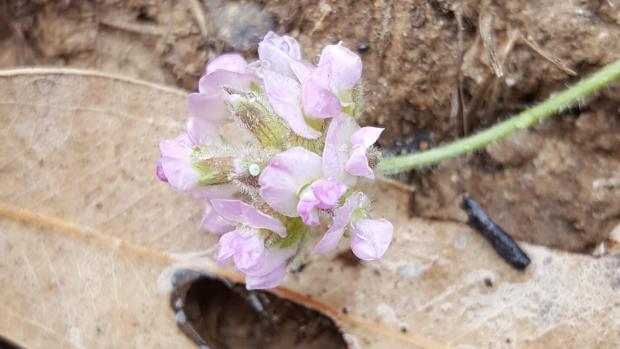Loading
A small plant with a big message

There are lots of things that impact on the health of our rivers and wetlands, and it may be surprising to learn that land-based animals are high on the list.
Obviously things like cow poo can have a direct impact on water quality, especially given cows poo five times more when they are standing in water than when they are standing on land.
However, the other end of the digestive process can also have a big impact, and it’s not just cows. Riverbank grazing by cattle, sheep, rabbits and native animals like kangaroos can affect the quality of water and can lead to a lot of native plants and flowers almost disappearing.
A Victorian Government pilot monitoring project on the banks of the Campaspe River at Strathallan and Rochester is finding out how healthy-river flows can bring back vegetation and even resurrect threatened species, when riverbanks are protected from grazing.
Before Christmas, the North Central Catchment Management Authority (CMA), Arthur Rylah Institute and a Dja Dja Wurrung Clans Aboriginal Corporation works crew built two 36m² exclusion plots on the banks of the river to measure the impact of healthy-river flows on bank vegetation.
“We met with landholders and found a couple of spots, one on a public reserve and one that is grazed by cattle,” North Central CMA Environmental Water Manager Louissa Rogers said.
“Putting the exclusion plots up will allow us to see the impacts our healthy-river flows can have on vegetation in specific areas with other variables excluded, especially when we keep animals out.
“The program is funded through the Victorian Government’s Victorian Environmental Flows Monitoring and Assessment Program and the research and monitoring is being carried out by the Arthur Rylah Institute, which is the government’s environmental research centre.”
And it is already producing results, with confirmation of the discovery of the threatened small scurf-pea in the plot.
“This is a small little plant, but its discovery is big news,” Ms Rogers said.
“It shows us what our healthy-river flows can achieve. It also shows us that working with local communities, local Traditional Owners and other government authorities can bring great results.
“Riverbank vegetation is an important habitat for birds and insects and can help filter runoff and stop a lot of nasties entering the river.
“We will continue to monitor the site, and with our healthy-river flows program continuing throughout the year, there might be more news like this to report.”
